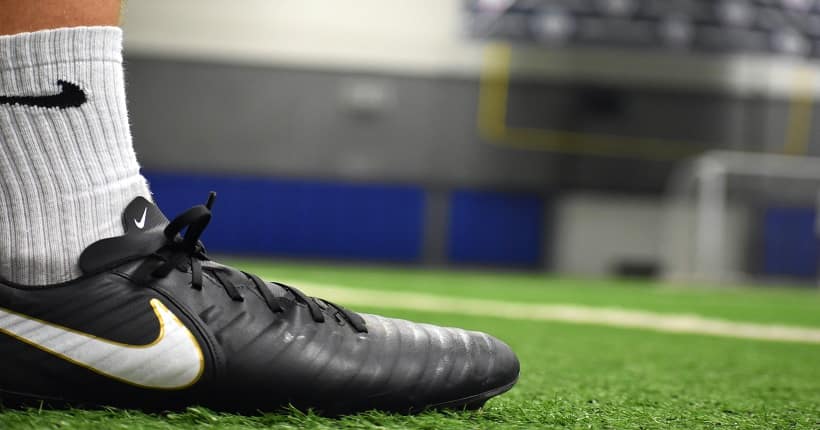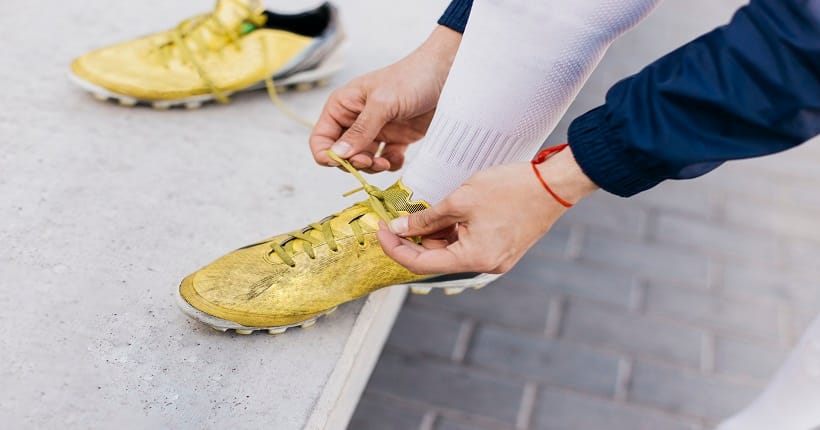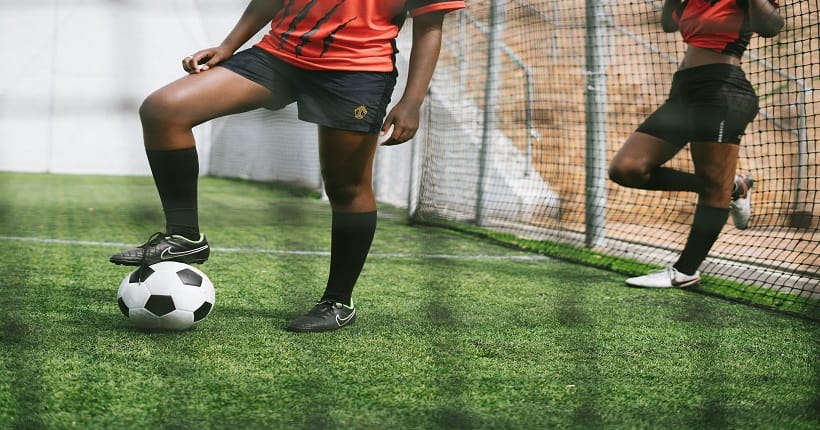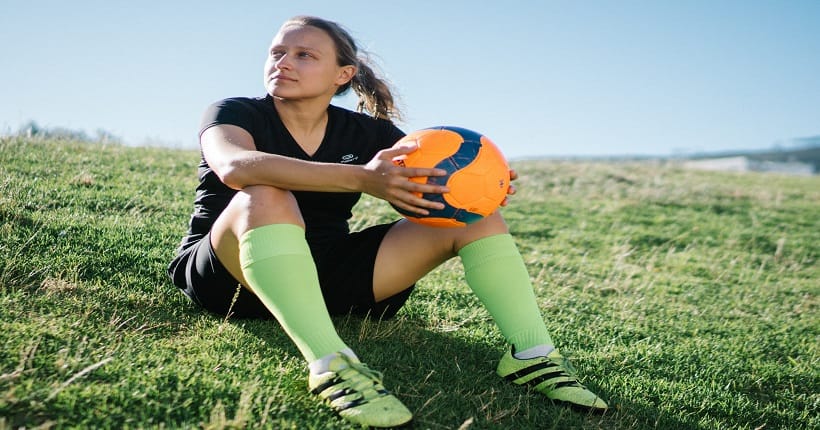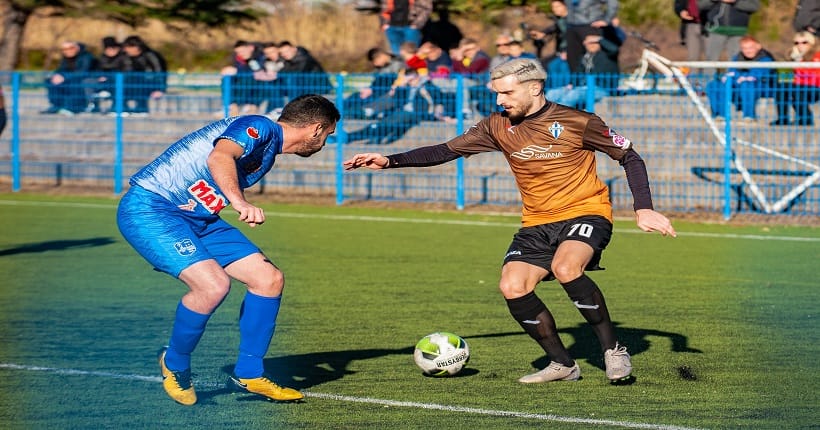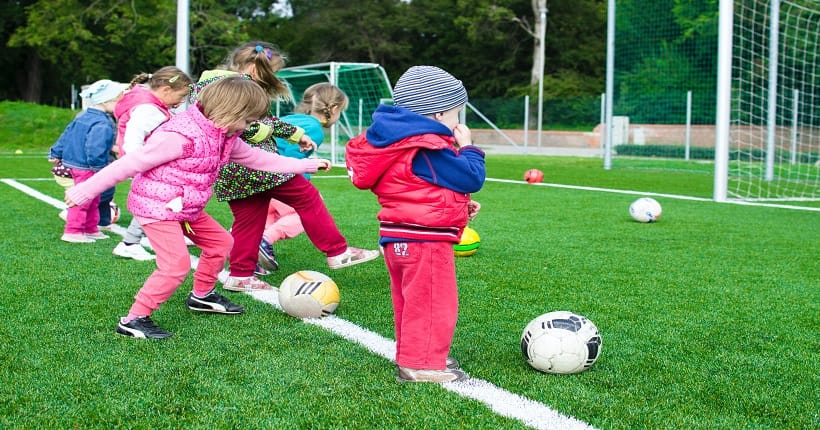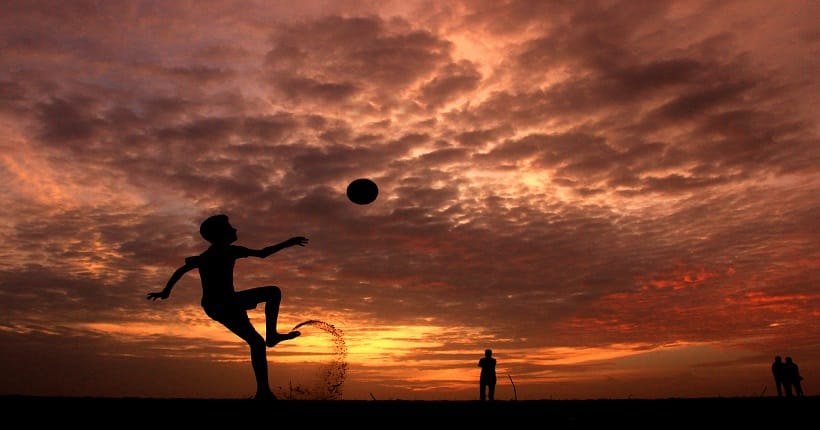Are Soccer And Baseball Cleats The Same?
Soccer and baseball cleats are not the same due to differences in design and functionality. Soccer cleats have studs for traction on grass, while baseball cleats have metal or plastic spikes for grip on dirt and grass.
In soccer, players need cleats that provide excellent traction on the grass. Soccer cleats typically have numerous studs or blades on the sole, strategically placed for maximum grip and quick acceleration on the field. On the other hand, baseball cleats are designed with metal or plastic spikes underneath for grip on both dirt and grass surfaces.
These spikes help baseball players dig into the ground for better stability and traction when running, fielding, or making quick movements. While both types of cleats serve the purpose of enhancing performance and preventing slips, their distinct designs cater to the specific needs of each sport.
Differences Between Soccer And Baseball Cleats
When it comes to selecting the right footwear for sports, it’s essential to understand the differences between various types of cleats. Soccer and baseball are two popular sports that require specialized cleats. While they may appear similar at first glance, there are significant variations in their construction, design, sole type, traction, and upper materials. Let’s explore these differences to help you make the right choice when purchasing your next pair of cleats.
The construction and design of soccer cleats differ from those of baseball cleats. Soccer cleats are typically low-cut shoes that provide a snug fit and maximum mobility. They are designed to be lightweight, allowing players to move quickly and change direction effortlessly on the field. On the other hand, baseball cleats are usually mid-cut or high-cut shoes that offer more ankle support and stability. The design of baseball cleats aims to protect the player’s ankles during quick movements, sliding, and running on different types of terrains.
One of the significant differences between soccer and baseball cleats lies in their sole type and traction. Soccer cleats feature firm, triangular or conical studs that provide optimal traction on the grass. These studs are strategically placed to offer stability while allowing players to pivot and maneuver comfortably. In contrast, baseball cleats have metal or rubber spikes on the outsole, which are longer and more numerous than those found on soccer cleats. This spike configuration provides superior traction on the dirt or grass found on baseball fields, ensuring players can accelerate, decelerate, and change direction effectively.
The materials used in the upper construction of soccer and baseball cleats also differ. Soccer cleats often feature a lightweight synthetic or leather upper, which provides a balance of durability, flexibility, and breathability. These materials allow players to have better control over the ball and promote a comfortable fit. On the other hand, baseball cleats tend to have a more robust construction with a combination of synthetic leather and mesh. This design offers increased support, protection, and durability, as baseball players’ feet are subjected to higher impact and stress during the game.
Although soccer and baseball cleats share some similarities, there are distinct differences in their construction, design, sole type, traction, and upper materials. Understanding these variances is crucial to ensure you choose the right cleats for your specific sport. Whether you’re a soccer player looking for agile and lightweight footwear or a baseball player requiring ankle support and traction on different terrains, selecting the appropriate cleats will greatly enhance your performance on the field.
Construction And Design
Understanding the construction and design of soccer and baseball cleats is essential for players looking to optimize their performance on the field. While both types of cleats serve the purpose of providing traction, stability, and support, their designs differ to cater to the specific needs of each sport. Let’s delve into the purpose and function of cleats, as well as the distinct construction and design elements of soccer and baseball cleats.
Purpose And Function Of Cleats
Cleats are not just another accessory for soccer and baseball players; they are an essential tool that can make a significant difference in their performance. The primary purpose of cleats is to provide traction on the playing surface, preventing slips and slides. Additionally, cleats offer stability during quick movements, support for the feet and ankles, and enable players to generate power and control while manipulating the ball. These factors are critical in both soccer and baseball, but their emphasis may vary due to the different nature of the two sports.
Soccer Cleat Design
Soccer cleats are designed to facilitate agility, quick changes of direction, and precise ball control. The distinctive attributes of soccer cleats include:
- Lightweight and Flexible Construction: Soccer players require cleats that allow swift movements without weighing them down. Lightweight materials, such as synthetic fibers, are commonly utilized to ensure freedom of movement.
- Low Ankle Cut for Agility: Soccer cleats typically have a low-cut design to provide players with the agility and flexibility needed for running, dribbling, and rapid direction changes. This design aims to reduce weight and enhance the player’s maneuverability during matches.
- Spike Configuration for Stability: The spike configuration on soccer cleats consists of multiple bladed or conical studs strategically placed around the sole. This design offers stability and traction on various types of surfaces, including natural grass, artificial turf, and wet fields.
Baseball Cleat Design
Baseball cleats are designed to optimize performance on hard ground surfaces, while also providing support for the tremendous physical demands of the sport. The distinct features of baseball cleats include:
- Sturdier Construction for Hard Ground: Baseball cleats are typically constructed using stronger and more durable materials, as the playing surface can be much harder compared to soccer fields. This construction ensures that the cleats can withstand the ruggedness of baseball gameplay.
- High Ankle Cut for Support: Given the lateral movements involved in baseball, cleats with high ankle cuts provide the necessary ankle support and prevent injuries. This design offers stability during swift changes in direction and quick bursts of speed on the field.
- Metal or Molded Cleats for Traction: Baseball cleats come with either metal or molded cleats, each offering a unique advantage. Metal cleats provide exceptional traction on hard surfaces, such as dirt and grass, while molded cleats are often used on artificial turf or softer ground.
Sole Type And Traction
Soccer and baseball are both popular sports that require specialized footwear to enhance performance and prevent injuries. One crucial aspect of sports footwear is the sole type and traction, which greatly impacts a player’s grip on the playing surface. While soccer and baseball cleats share similar overall designs, there are distinct differences in the sole types used for each sport.
Soccer Cleat Sole Types
When it comes to soccer cleats, there are several sole types available, each designed to cater to different playing conditions. Let’s take a closer look at these:
Firm Ground (FG) Cleats
Firm Ground (FG) cleats are the most common and widely used soccer cleats. They feature molded studs or blades evenly distributed throughout the sole, providing excellent traction on natural grass surfaces. These cleats offer stability and reliable grip, allowing players to make sharp cuts and quick movements on firm ground.
Soft Ground (SG) Cleats
Soft Ground (SG) cleats are specially designed for muddy or wet playing conditions. These cleats have longer, removable studs that can be adjusted based on the field conditions. The longer studs provide better penetration and traction in soft and slippery terrain, minimizing slippage during play.
Artificial Ground (AG) Cleats
In recent years, artificial turf pitches have gained popularity. To cater to these surfaces, soccer cleats with specialized soles known as Artificial Ground (AG) cleats have been developed. AG cleats feature shorter, multiple studs or blade patterns that provide optimal grip on artificial grass surfaces. They are engineered to prevent excessive stud pressure on the harder turf, enhancing player comfort and reducing the risk of injury.
Indoor/Street Cleats
For indoor or street soccer, where matches are played on hard surfaces like courts or concrete, specialized indoor or street cleats are used. These cleats feature a flat rubber sole with patterns designed to provide excellent traction and grip without damaging the playing surface. The sole material is typically non-marking, ensuring no scuff marks are left behind.
Baseball Cleat Sole Types
Baseball cleats also vary in sole types, designed to accommodate the unique demands of the game and its playing surfaces. Here are the different sole types commonly found in baseball cleats:
Molded Plastic Cleats
Molded plastic cleats are the most popular choice for baseball players. These cleats have plastic studs molded into their soles. They offer reliable traction on natural grass or synthetic turf, providing stability while running, stopping, and making quick turns on the baseball diamond.
Metal Cleats
Metal cleats are favored by professional baseball players due to their exceptional grip and stability. These cleats feature metal studs that can be detachable or permanently attached to the sole. Metal cleats provide enhanced traction on natural grass surfaces, allowing players to dig into the ground and make quick movements.
Turf/Artificial Cleats
For playing on artificial turf or other hard surfaces, baseball cleats with specialized soles known as turf or artificial cleats are used. These cleats feature shorter, softer rubber studs designed to provide optimal grip on turf or harder surfaces. The design helps prevent excessive stud pressure on the surface, ensuring players can make agile movements with reduced risk of slipping or injury.
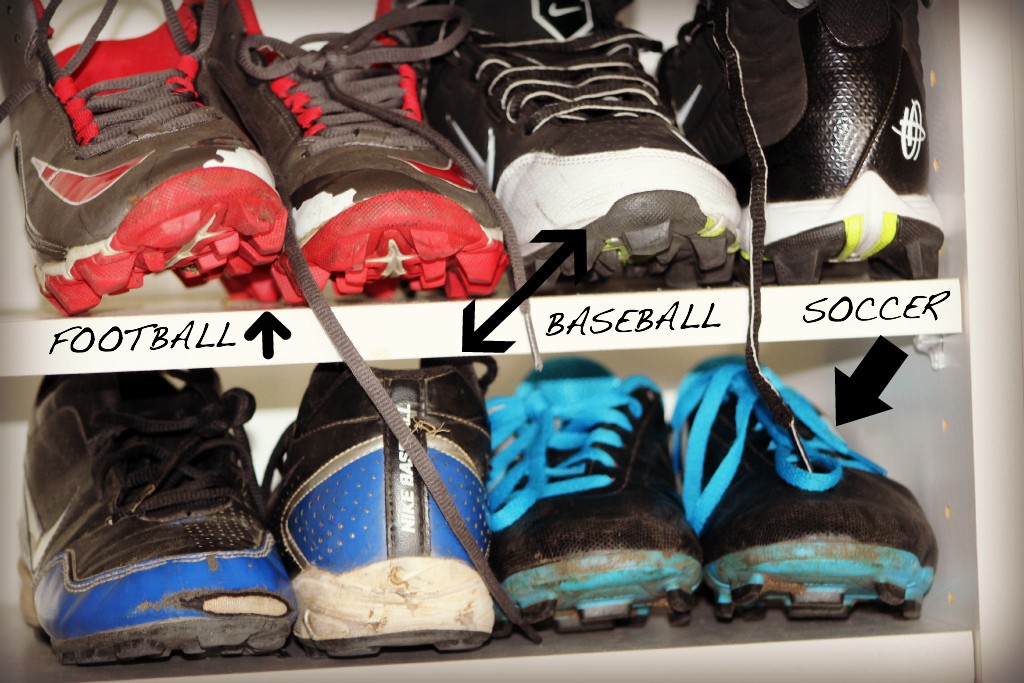
Credit: ilovetowatchyouplay.com
Upper Materials
When it comes to choosing the right cleats for soccer or baseball, understanding the differences in the upper materials can make all the difference in your performance on the field. Soccer and baseball cleats may seem similar at first glance, but their upper materials can vary significantly, impacting factors such as durability, comfort, and overall performance.
Soccer Cleat Upper Materials
Synthetic Leather
One of the most popular upper materials for soccer cleats is synthetic leather. This material offers a combination of durability, flexibility, and lightweight construction. Synthetic leather soccer cleats are often more affordable compared to their genuine leather counterparts, making them a preferred choice for many players. This type of upper material also provides good water resistance, ensuring your feet stay dry even in wet playing conditions.
Kangaroo Leather
Kangaroo leather is considered a premium upper material for soccer cleats. Known for its softness, flexibility, and excellent touch on the ball, kangaroo leather cleats are often favored by professional players. Its natural properties allow for a great fit and provide optimal ball control. However, kangaroo leather cleats tend to be more expensive and require extra care to maintain their quality over time.
Mesh and Textile Combinations
In addition to leather, soccer cleats come in various mesh and textile combinations. These materials offer lightweight and breathable options, keeping your feet cool during intense gameplay. Mesh and textile combinations also provide flexibility and support, allowing for easy foot movements and quick direction changes. They are often used in conjunction with leather accents or overlays for added durability.
Baseball Cleat Upper Materials
Synthetic Leather
Similar to soccer cleats, synthetic leather is commonly used as an upper material for baseball cleats. It offers durability, flexibility, and lighter weight compared to genuine leather options. Synthetic leather baseball cleats are usually more affordable and require less maintenance. They also provide good water resistance, ensuring your feet stay dry during wet weather conditions.
Full Grain Leather
Full grain leather is a premium upper material choice for baseball cleats. Known for its strength and durability, this type of leather provides excellent support and protection for your feet. Full grain leather cleats are often preferred by professional baseball players due to their long-lasting quality and ability to mold to the shape of the foot over time. However, they can be more expensive and need regular care to maintain their condition.
Mesh and Textile Combinations
Similar to soccer cleats, baseball cleats also utilize mesh and textile combinations in their upper construction. These materials offer lightweight and breathable options, allowing for ventilation and comfort during long hours on the field. Mesh and textile combinations provide flexibility and support, enabling optimal foot movements and agility while playing baseball.
Frequently Asked Questions On Are Soccer And Baseball Cleats The Same?
Can You Use The Same Cleats For Baseball And Soccer?
No, you cannot use the same cleats for baseball and soccer. Each sport requires different types of cleats to provide the necessary traction and support for the specific movements and playing surfaces. Using the wrong cleats may affect performance and increase the risk of injury.
How Can You Tell The Difference Between Baseball And Soccer Cleats?
Baseball cleats have spikes or metal studs, whereas soccer cleats have rubber or plastic studs. The spikes on baseball cleats provide better traction on dirt or grass, while soccer cleats have studs designed for agility and better grip on artificial turf or grass.
What’s The Difference Between Soccer And Softball Cleats?
Soccer cleats and softball cleats differ in their design. Soccer cleats have studs or blades for traction on grass, while softball cleats have molded spikes for traction on dirt and turf. Each cleat type is optimized for the specific playing surface, ensuring optimal performance and safety for the respective sport.
Can You Use Football Cleats For Baseball?
Football cleats are not recommended for baseball as they are designed with different traction patterns that can affect your performance on the field. It is best to use specific baseball cleats that provide the necessary grip and support for the sport.
Are Soccer Cleats The Same As Baseball Cleats?
No, soccer cleats and baseball cleats are designed differently to suit the specific needs of each sport.
Can I Use Soccer Cleats For Baseball?
While it is possible to use soccer cleats for baseball, they may not provide the necessary traction and support needed for baseball movements.
Conclusion
While there may be some similarities between soccer and baseball cleats, they are ultimately designed to cater to the specific needs of each sport. Soccer cleats prioritize agility and grip on grass, while baseball cleats focus on traction and stability on dirt and turf.
Understanding these differences is crucial to performing at your best and preventing potential injuries in either sport. So, make sure to choose the right cleats based on the specific demands of your game and enhance your performance on the field.

